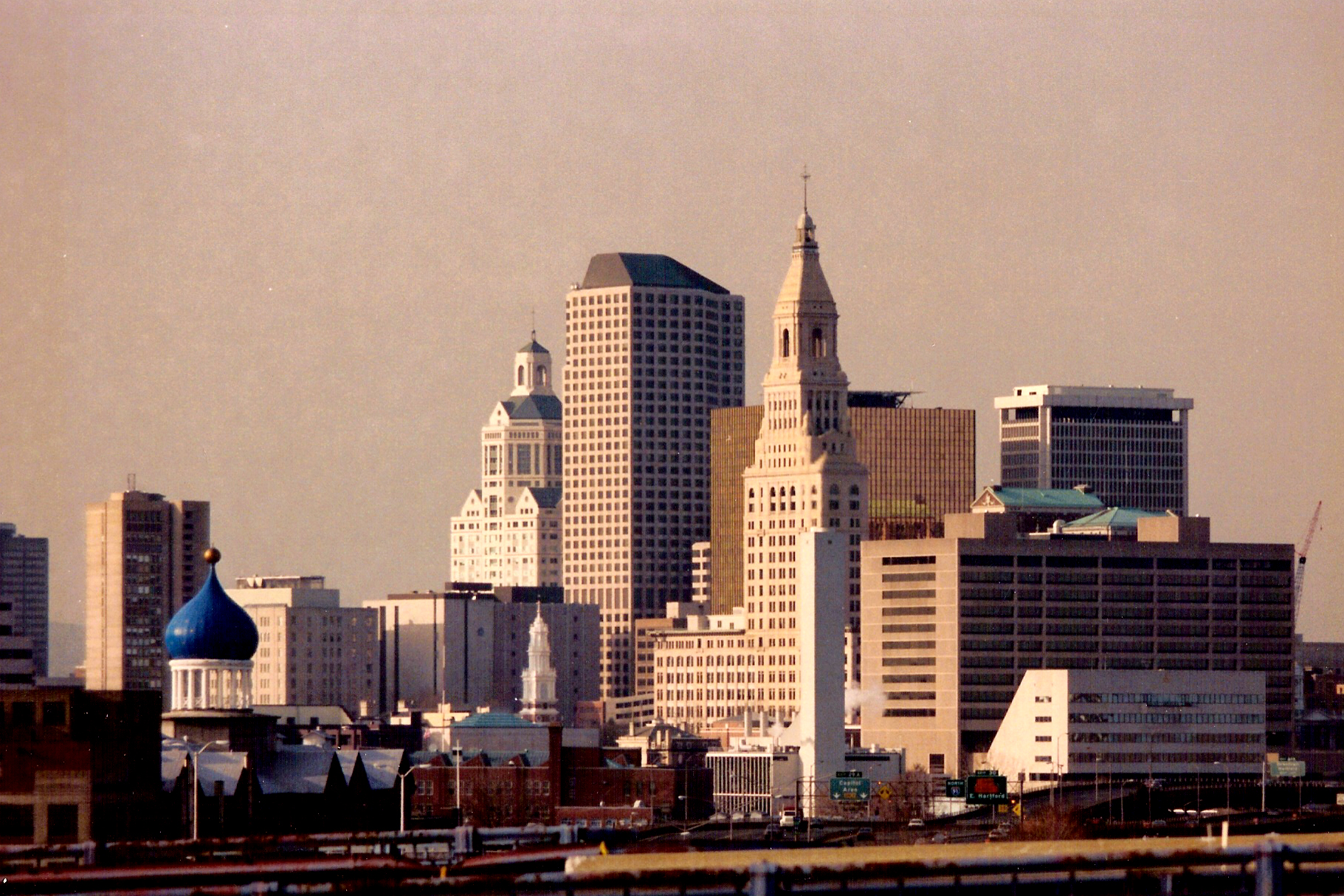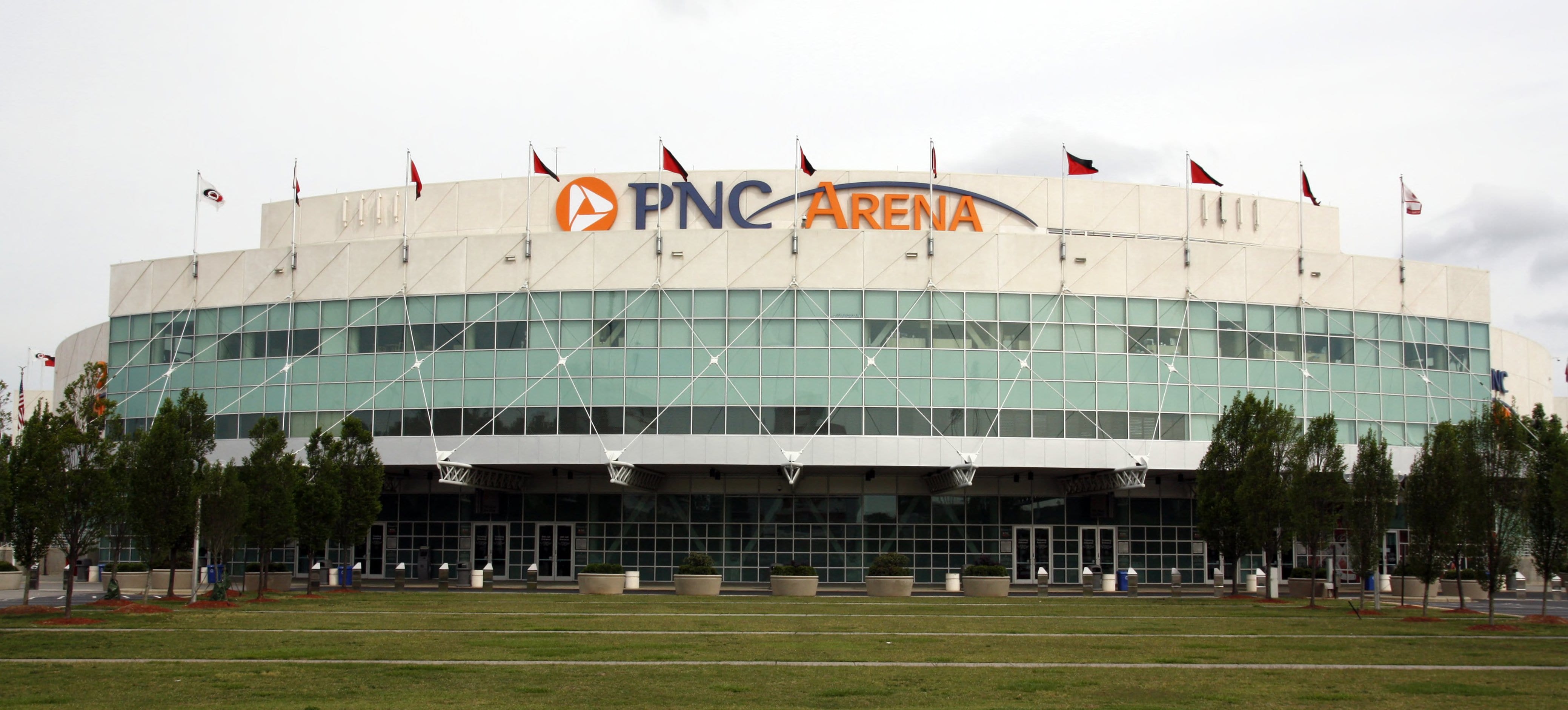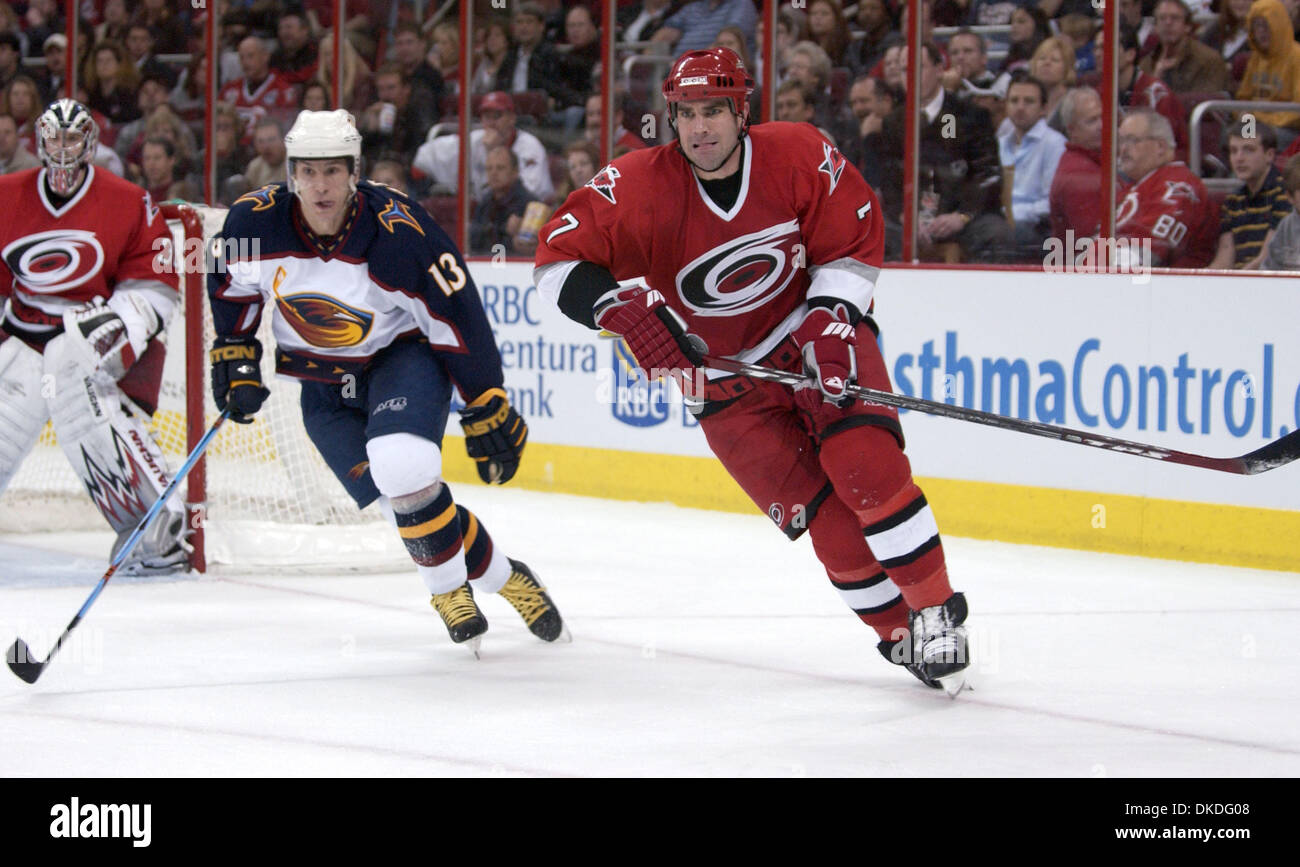They should be playing them in Hartford, Connecticut, where, until 1997, they were the Hartford Whalers.
But team owner Peter Karmanos moved them from a city and a region that loves hockey to a city and a region that doesn't.
Indeed, last season, the 'Canes averaged 12,007 fans per game, or 64 percent of capacity at the PNC Arena, both 30th and dead last in the NHL.
In spite of usually making the Playoffs, reaching the Stanley Cup Finals in 2002 and winning the Cup in 2006, the Carolina Hurricanes have been a commercial failure.
However, you can't just judge Karmanos by how stupid he looks now. You have to consider how the decision looked in 1997, when he made it.
Top 5 Reasons You Can't Blame Peter Karmanos for Moving the Hartford Whalers to the Carolinas
First, a couple of reasons that didn't make the cut: The Best of the Rest.
Bobby Orr. Whaaaaaaaat?!? One of the biggest heroes in the history of hockey is one of the big villains in the history of the Hartford Whalers? Well, not directly, and certainly not intentionally. But hear me out:
Up until Orr's arrival in the NHL in 1966, the defining teams in American hockey were the Detroit Red Wings, led by Gordie Howe; and the Chicago Blackhawks, led by Bobby Hull. There were only 2 other teams in the U.S.: The Boston Bruins, who signed Orr; and the New York Rangers, who, while they didn't exactly "suck," did pretty much stink for most of the preceding 20 years.
Whether Orr, or Howe, or Wayne Gretzky, or someone else is the greatest player in hockey history is a debate for another time. But while the Bruins had had the occasional success before Orr arrived in 1966, he made them an iconic franchise of North American sports, well beyond Greater Boston.
Thanks to him, the Bruins would always be the most popular hockey team in New England. Until the return to glory of the Red Wings in the 1990s, followed by the bandwagon effects of the Los Angeles Kings and the Chicago Blackhawks in this decade, the Bruins' 1970 and '72 Stanley Cups, led by Orr and Phil Esposito, insured that the Bruins would rule New England in the Winter, more than the Celtics ever have, just as the Red Sox rule the Summer.
Because of Orr, even having Howe in his last 3 seasons and Hull for the last few games of his career didn't help the Whalers. They were always going to be the Clippers to the Bruins' Lakers, the Nets to the Bruins' Knicks, the Vanderbilt to the Bruins' University of Tennessee. Even if the Whalers had won a Cup, it would merely have made them the Mets to the Bruins' Yankees. (New England fans will hate that analogy, but they will certainly understand it.)
And it didn't matter how much the NHL promoted Steve Yzerman and Eric Lindros in the late 1990s and early 2000s, and Sidney Crosby since: None of them was ever going to be Bobby Orr. There is not a damn thing that Commissioner Gary Bettman can do to make Crosby mean as much to American hockey fans as Orr -- especially after the 2010 Winter Olympics.
There is, of course, a reason why making Orr a reason why the Whalers were doomed is flawed: Without the increase in popularity of hockey in America, and especially in New England, in the early 1970s, the World Hockey Association, and thus the Whaler franchise itself, wouldn't even have been economically feasible.
Even if Orr had played for the Rangers, the Wings or the Hawks, and led them to glory, it would have had a residual effect on New England. And it might even have led the WHA to put a team in Boston, and they probably would have had to move anyway, possibly to Hartford. But there's no way hockey would have been popular enough in Connecticut to sustain the Whalers after the fall of the WHA in 1979. Orr is much more responsible for the Whalers' birth than he is for their death -- but, perhaps, he provided them with a "birth defect" that led indirectly to their doom.
John Rowland. In the middle of the 1996-97 season, Karmanos announced that the Whalers were definitely moving -- though he didn't say where, a rarity for a sports team owner. At first, he wanted to go to Norfolk, Virginia, but a deal fell through. Rowland, the Governor of Connecticut, announced that he was not going to spend the State's tax dollars to fund a new arena that would replace the Hartford Civic Center and save the Whalers.
Then he backtracked, and a deal was cut for a $147.5 million arena. Then Karmanos raised the ante, and wanted another $45 million, to cover the money he expected to lose during the 3 years it would take to build the arena. Rowland said the deal was off, and, to this day, the Civic Center, now named the XL Center, is the biggest arena in the State of Connecticut.
In addition, Rowland seemed to be more interested in bringing the NFL to Connecticut, by building a 60,000-seat stadium in East Hartford, presumably to be a home field for the University of Connecticut and the Patriots, who, though leaving the immediate Boston area, could have kept their New England name. It seems that Rowland, a Republican, was a conservative when it came to spending tax dollars on hockey, but a liberal when it came to football.
In early 1998, after the Whalers had already left, Pats owner Robert Kraft backed out of the East Hartford deal, and made one with Massachusetts to build a new stadium next-door to the one he had in Foxboro. So Rowland not only blew it with the NHL, he blew it with the NFL, too.
In the words of the immortal Redd Foxx, "You big dummy."
Rowland was elected Governor in 1994, 1998 and 2002, but resigned in 2004, and ended up going to prison -- twice. In other words, Rowland was both a fool and a crook. In contrast to other Northeastern States, Rowland is the only Governor of Connecticut ever to go to jail.
The Other Carolina Teams. The NBA's Charlotte Hornets arrived in 1988. The NFL's Carolina Panthers arrived in 1995. They made the Carolinas a viable market for major league sports teams. Even now, there are people who want to fill out the card of "all four sports," and give Charlotte a Major League Baseball team. (They don't have the ballpark for it, and are unlikely to have it anytime soon, so the best they can hope for is an expansion with enough lead time to build an MLB-sized ballpark.)
The Hornets moved in 2002 not because they were unpopular, but because their owner, George Shinn, was. The NBA had no problem with replacing them with the expansion Bobcats in 2004. (They have since been allowed to change their name to the Hornets.) The new Hornets and the Panthers (defending NFC Champions as I write this) were popular in both North and South Carolina in the mid-1990s, and so Karmanos had reason to believe the NHL could succeed in the Carolinas as well.
He was half-right: The Panthers and the new Hornets aren't going anywhere. But how long can he sustain the Hurricanes in Raleigh? Will he have to move them to Charlotte, to share the arena with the Hornets? (It would allow him to keep the Carolina name.) Or will he have to move them somewhere else? (Quebec City? Seattle? Houston? Hamilton, Ontario?) Or will he have to sell them to someone who will, maybe, just maybe, move them back to Hartford where they belong? Stay tuned.
Now, for the Top 5:
5. Transplants. Maybe Carolinians, North and South, aren't natural hockey fans. But a lot of people from the Northeast and Midwest have moved to Charlotte and to Raleigh-Durham over the last 25 years. Karmanos saw this as it was happening, and presumed (correctly, as it turned out) that it would continue to happen.
Charlotte, North Carolina
Raleigh, North Carolina
A recent photo of the Hartford Civic Center,
now named the XL Center
It should be noted that, unlike some other team owners that moved, Karmanos never used his lease as an excuse. True, he didn't own the arena, but he did not complain about the terms of his lease, only about the number of seats and how much revenue they were generating.
3. Market Size. Hartford simply isn't a big enough market to support a major league sports team. A big reason why Karmanos moved the Whalers was corporate support. While Hartford is home to some big insurance companies, that's about it.
Hartford's population, according to a 2014 estimate, is 124,893. That's only a little larger than that of Green Bay, Wisconsin, which never would have survived as the home of a professional football team without the NFL's revenue-sharing agreement. The metropolitan area (counted separately from Boston) has less than 1.5 million people, less than any U.S. city currently in the NHL (but more than the Canadian cities of Ottawa, Calgary, Edmonton and Winnipeg, and the former NHL outpost of Quebec City).
Hartford, Connecticut
Charlotte, on the other hand, is a major banking center. It has 810,000 people, and a metro area of 2.5 million. The Raleigh-Durham-Chapel Hill area is a scientific-corporate center, a.k.a. the Research Triangle. Raleigh has 432,000 people, Durham 252,000, and the metro area a shade over 2 million. The Carolinas had more money to spend on seats, especially luxury boxes, than did Connecticut.
2. Market Saturation. The Hartford Civic Center was only 102 miles from the Boston Garden and its successor arena (now the TD Garden), and Madison Square Garden was just 115 miles away. The Meadowlands Arena was just 117 miles away.The Nassau Coliseum is just 122 miles away, and the Islander dynasty of the early 1980s took a few fans from the New York side of Connecticut away from the Whalers. The new Philadelphia arena (now the Wells Fargo Center) is 214 miles away. There wasn't really room for another hockey team in the Northeast.
Even when it was just Bruins vs. Rangers,
the market was pretty well filled.
Thrashers vs. Hurricanes: A rivalry that never happened.
"Because I said so, that's why!"
Sounds pretty clear that Karmanos can't be blamed, right?
VERDICT: Guilty. Yes, Karmanos can still be blamed! Let's look at the top 5 reasons again:
5. Transplants. Hartford had transplants, people from New York City and Boston, who loved hockey. If it didn't, the Whalers wouldn't have been possible in the first place.
4. The Arena Situation. If Karmanos hadn't gotten greedy and demanded the extra $45 million from the State government, the new arena would have opened on time in 2000, and the Whalers would probably still be there, and would have given Connecticut the 2006 Stanley Cup. Karmanos was then the CEO of Compuware, a computer software company. Then as now, he was worth over $1 billion. And he was whining about $45 million? Bitch, please!
3. Market Size. If Hartford didn't have enough people, Karmanos could have gone the regional route. He could have promoted the Whalers all over Connecticut, in New Haven and Bridgeport, in Fairfield County where people who couldn't get into Ranger games would have an option not a whole lot further away. At its furthest point, the closest Connecticut town to New York City, Greenwich, is 84 miles from downtown Hartford.
Springfield, Massachusetts is closer to Hartford than Greenwich is to Madison Square Garden. Worcester, Massachusetts isn't all that much further from Hartford than it is from Boston. Nor is Providence, Rhode Island. And Bruin tickets are about as tough to get as Ranger tickets. (This is as true now as it was 20 years ago.) Albany, New York is closer to Hartford than it is to Madison Square Garden.
2. Market Saturation. As I said, Ranger tickets and Bruin tickets are tough to get. If Karmanos had figured out that Connecticut was his territory, he could have gotten the Fairfield County people who were frozen out of one Garden, and the Tolland County and Windham County people who were frozen out of the other. The New York Tri-State Area does support 3 NHL teams; there's no reason why New England as a whole can't support 2.
1. Gary Bettman. The owners hire the Commissioner. If they choose, they can overrule him. If Karmanos had wanted to stay in Hartford, and had gotten 20 out of 26 owners (75 percent, including himself), to go along with him, what was Bettman going to do? He could have stopped a move, but he couldn't have forced one.
This time, the owner who moved is guilty, guilty, guilty. You are guilty, Peter Karmanos.













No comments:
Post a Comment